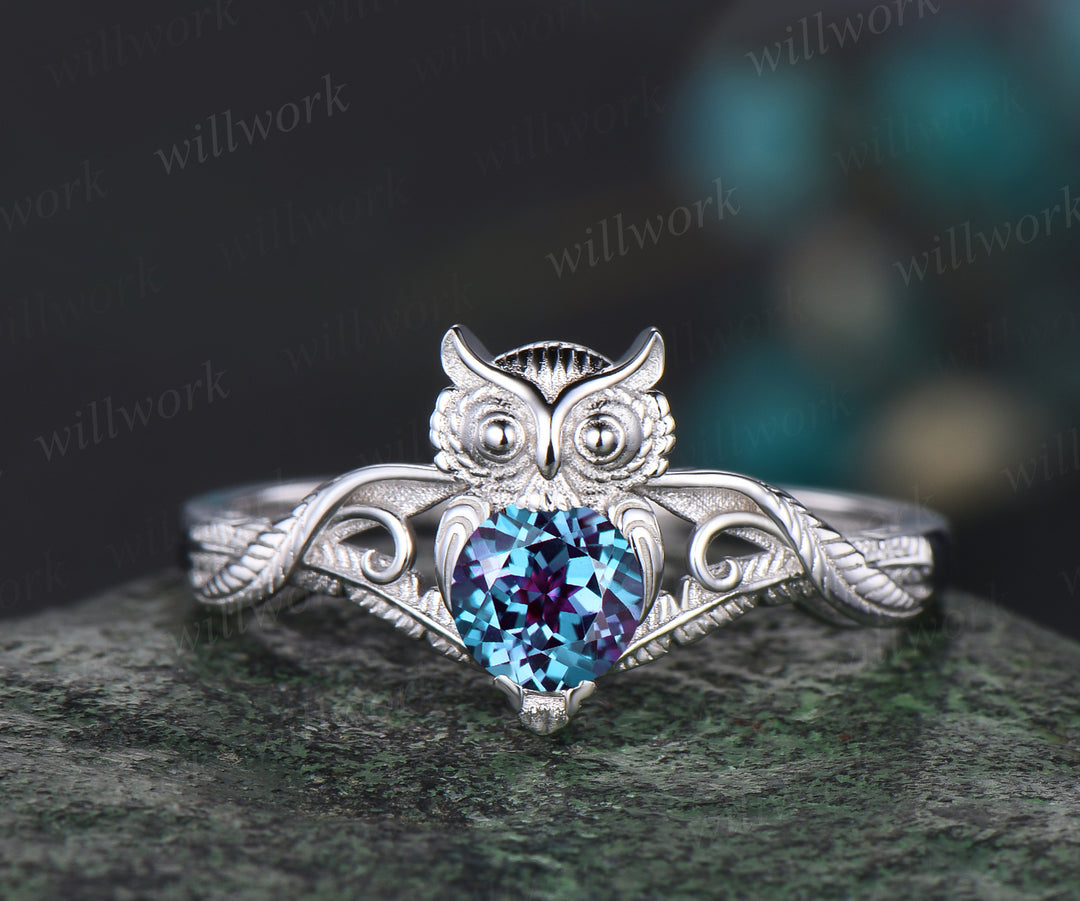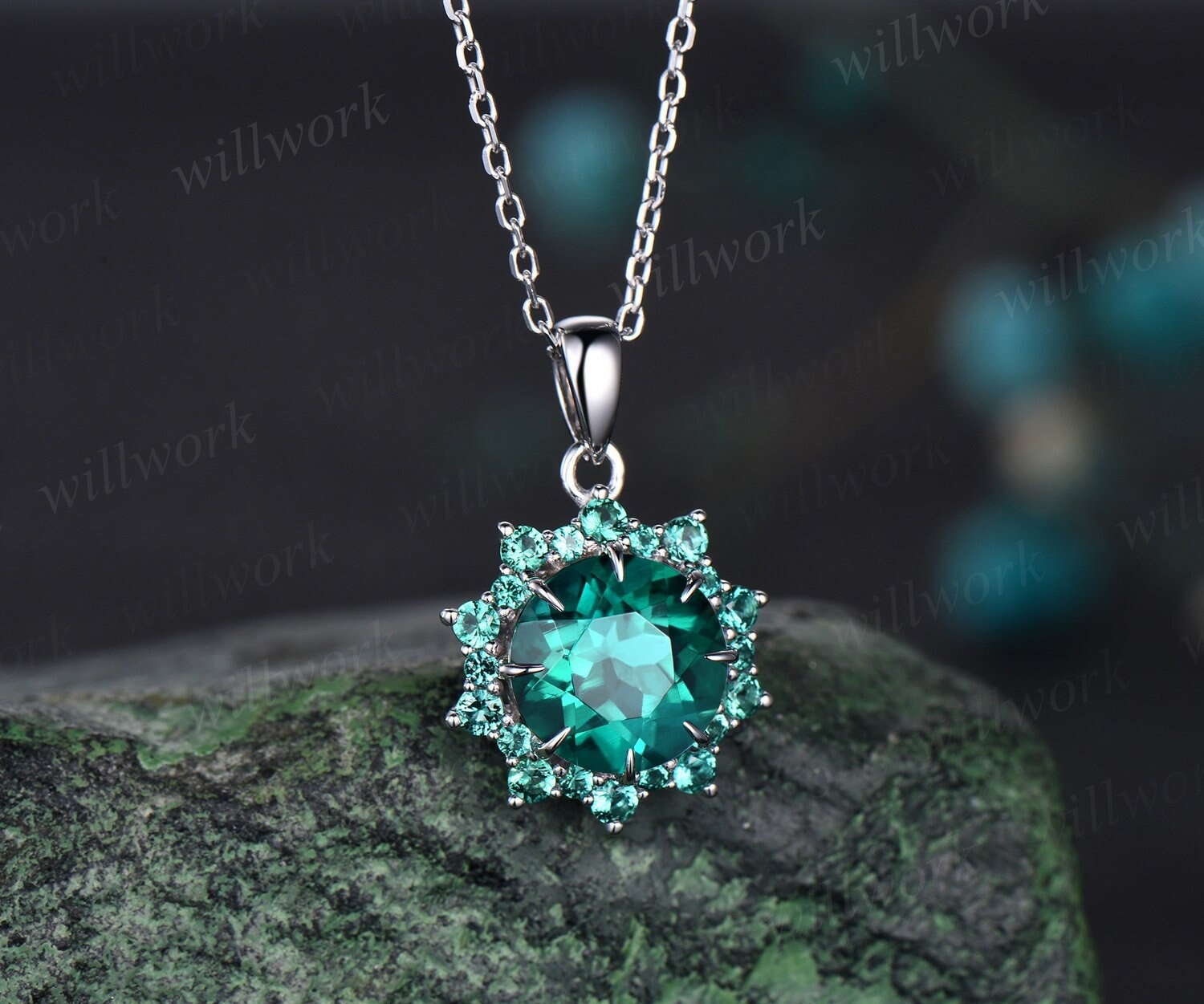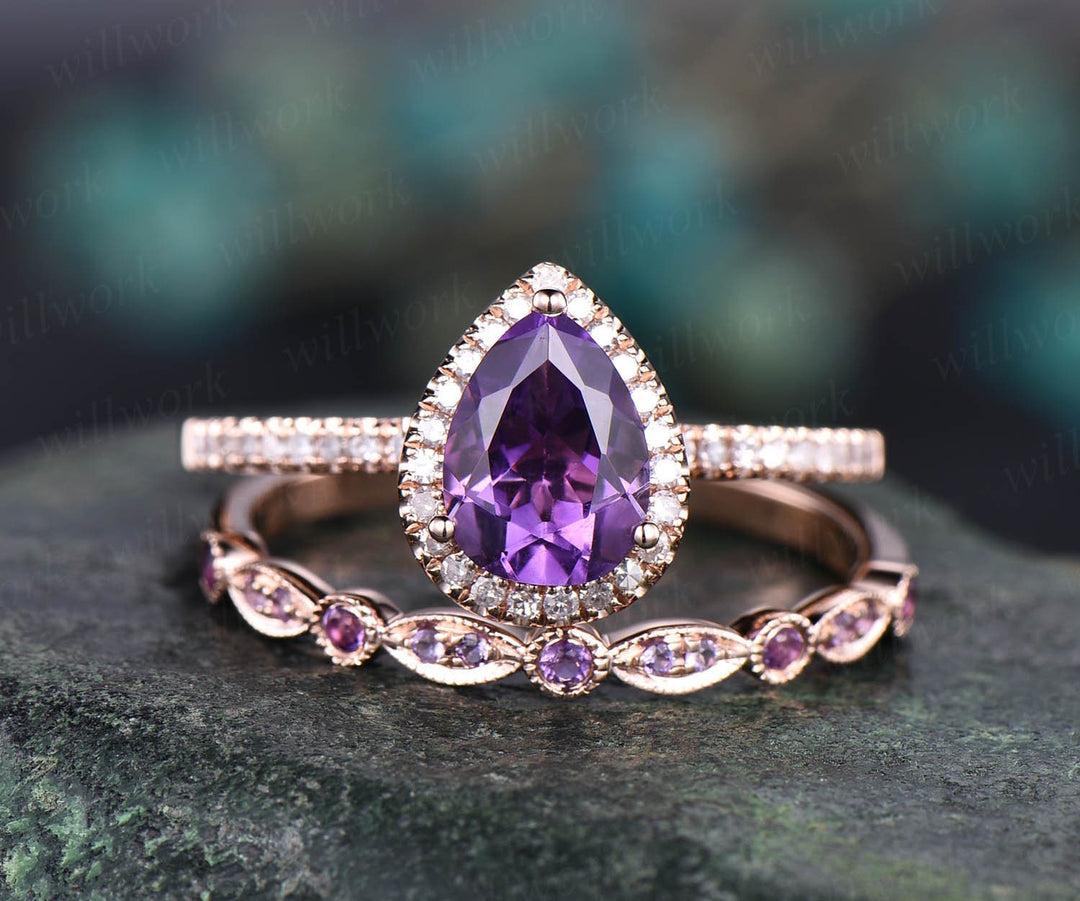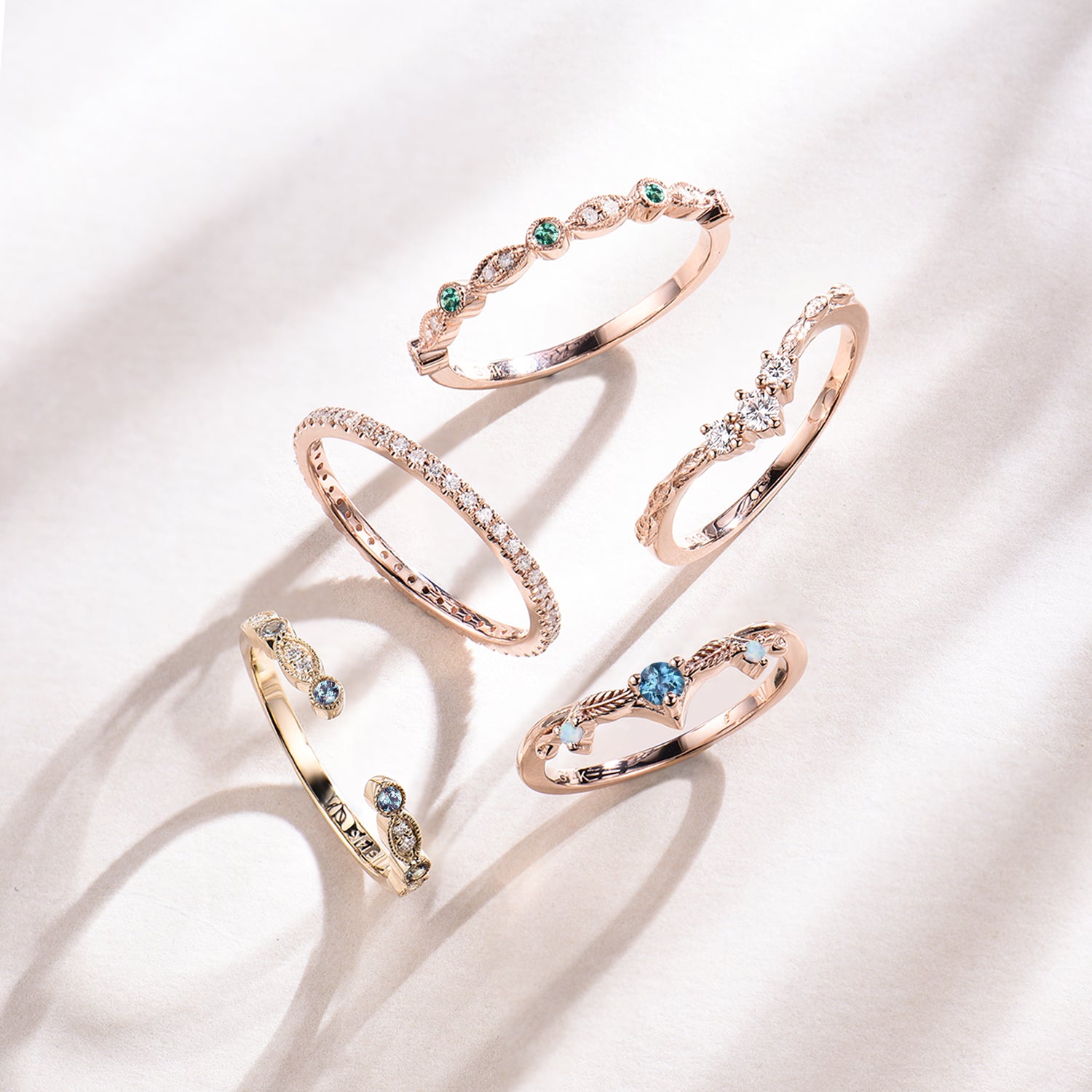Gemstones of Distinction: Exploring Alexandrite, Emerald, Amethyst, and Diamond
In the world of gemstones, Alexandrite, Emerald, Amethyst, and Diamond stand out as four of the most celebrated and sought-after jewels, each boasting its own unique set of characteristics, a rich history, and deep, often mystical meanings. These gems have not only be worn by royalty and celebrities throughout the ages but have also found a special place in the hearts of gem enthusiasts and collectors worldwide. In this comprehensive article, we will embark on a journey through time and culture to unravel the distinct qualities that make each of these stones a marvel of nature.
We'll dive deep into the intriguing histories that have shaped their legacy, uncover the symbolic meanings attributed to them across various cultures, and explore their physical properties that set them apart in the world of precious stones. Furthermore, for those captivated by the attractiveness of these gems and considering their acquisition, this article will serve as an invaluable guide. We will compare these gemstones against each other, highlighting their unique features and providing practical advice for prospective buyers.
Whether you're a seasoned gemstone collector, a jewelry enthusiast, or simply curious about the fascinating world of these exquisite stones, this article promises to enlighten and guide you in your quest to understand and perhaps own a piece of this timeless beauty.
Alexandrite
Alexandrite, a color-change variety of the mineral chrysoberyl classified as a cyclosilicate, is fascinating in both its chemical composition and historical significance. Discovered in the 1830s in Russia's Ural Mountains, this remarkable gemstone was named in honor of Czar Alexander II, reflecting its royal connections and geographical origins. Its most striking feature is undoubtedly its unique color-changing property; under different lighting conditions, Alexandrite shifts from a mesmerizing green in daylight to a rich red or purple in incandescent light, embodying a sense of duality and adaptability.
This intriguing characteristic has not only made it a subject of admiration and curiosity but has also imbued it with various symbolic meanings, often associated with balance, renewal, and adaptability. While Russia remains its classic source, Alexandrite is also found in diverse global locations, including the luscious lands of Sri Lanka, the mineral-rich regions of East Africa, and the vibrant terrains of Brazil, each deposit contributing to the gemstone's varied types and adding to its reputation in the world of precious stones. This blend of unique chemical properties, captivating history, symbolic depth, and global presence makes Alexandrite a gemstone of both scientific interest and cultural significance.

Unique Branch Twig Vine Owl Engagement Ring
Emerald
Emerald, a stunning and highly sought-after variety of the mineral beryl, owes its vibrant green hue to trace amounts of chromium or vanadium, with a chemical formula of Be₃Al₂(SiO₃)₆. This exquisite gemstone has captivated human fascination for over 5000 years, standing as a symbol of opulence and rarity in various cultures throughout history. Its appeal is primarily due to its deep green color, which is considered the most prized among colored stones, representing a blend of beauty, status, and mystique.
Emeralds are not only valued for their aesthetic appeal but also for their symbolic significance, often associated with renewal, growth, and prosperity. These precious stones are found in a range of geological settings, including igneous, metamorphic, and sedimentary rocks, with significant deposits located in specific regions across the globe.
Key global locations for emerald mining include the lush landscapes of Colombia, known for producing some of the finest emeralds in the world, the ancient mines of Egypt, the rocky terrains of Zambia, and the diverse geological settings of Brazil, among others. Each of these locations contributes unique characteristics to the emeralds they produce, adding to the rich diversity and elegance of this gemstone, making it a coveted treasure in the world of fine jewelry and gemstone collections.

Unique Snowdrift Halo Emerald Pendant
Amethyst
Amethyst, a mesmerizing purple variety of quartz (SiO₂), derives its enchanting hue from the interplay of irradiation and iron impurities within its structure. This gemstone boasts a rich history of personal adornment spanning over 2000 years, having once held a status comparable to that of ruby and emerald, until the discovery of substantial deposits in Brazil in the 19th century significantly increased its availability.
Historically, amethyst was revered not just for its beauty but also for its supposed metaphysical properties; it was believed in antiquity to prevent intoxication and promote clarity of mind, a symbolism that endures in various cultural contexts to this day.
Known for its range of purple shades, from deep violets to lighter lilacs, amethyst’s allure is as much about its color as its lore. Its wide distribution across the globe is attributed to its quartz composition, making it a readily available gemstone. This accessibility, coupled with its storied past and vibrant color, continues to make amethyst a beloved choice in jewelry and decorative arts, valued by collectors and enthusiasts alike.

Pear Cut Amethyst Halo Diamond Wedding Ring
Diamond
Diamonds, the epitome of precious stones, are composed predominantly of carbon, accounting for approximately 99.95 percent of their structure, with the remainder being trace elements that can subtly influence their color and crystal shape. These extraordinary gems are formed under extreme conditions of high temperature and pressure, typically about 100 miles beneath the Earth's surface, where they undergo a remarkable transformation over billions of years. Celebrated for their unrivaled hardness and breathtaking brilliance, diamonds are unique in the gem world as the only stones made entirely of a single element. This distinctive composition contributes to their extraordinary durability and the captivating play of light that makes them so sought-after. Beyond their physical properties, diamonds hold profound cultural significance; they are the traditional birthstone for April and are emblematic of enduring love and commitment, often chosen to mark significant wedding anniversaries. Their blend of unparalleled beauty, deep symbolism, and physical resilience continues to captivate hearts and minds, securing their status as a universal symbol of luxury, romance, and timeless elegance..
Comparison
Family Relations
Emerald and Alexandrite, while both cherished for their unique beauty, share a closer kinship in the mineral world as varieties of beryl and chrysoberyl, respectively. This familial link underlines similarities in their formation and properties, differentiating them from diamond and amethyst, which are chemically and structurally distinct.
Diamond, renowned for its unparalleled hardness and brilliance, is composed of pure carbon, crystallized under extreme conditions, while amethyst, a variety of quartz, owes its captivating purple hue to iron impurities and irradiation, highlighting the diverse and fascinating nature of gemstones in terms of composition, formation, and aesthetic appeal.
Color and Brilliance
Alexandrite, emerald, amethyst, and diamonds each possess distinct qualities that set them apart in the world of gemstones: Alexandrite is celebrated for its remarkable color-changing ability, transitioning from green to reddish-purple, depending on the light; emerald is renowned for its deep, vivid green hue, embodying the essence of opulence; amethyst captivates with its range of purple shades, from light lavender to deep violet, symbolizing tranquility and clarity; and diamonds, the epitome of luxury, are prized for their unparalleled brilliance and unmatched hardness, making them a symbol of enduring strength and beauty in jewelry and adornment.
Rarity and Value
Alexandrite and emerald stand out in the gemstone market due to their rarity and distinct colors, commanding high values owing to limited availability. Alexandrite, with its unique color-changing feature, and emerald, with its deep green hue, are both less commonly found, enhancing their beauty. On the other hand, amethyst, once considered rare, has become more accessible following significant finds, particularly in Brazil. Diamonds, while relatively common in certain qualities, can attain extreme value, especially when exhibiting high clarity and large carat sizes, making them a coveted choice in both investment and luxury jewelry markets.
Buying Guide
When purchasing precious gemstones such as diamonds, emeralds, amethysts, or alexandrites, it's crucial to prioritize several key factors to ensure you're getting both value and authenticity. First and foremost, authenticity should be verified through certificates from reputable gemological institutes, which provide a reliable assessment of the gemstone's characteristics and origin.
For diamonds, the universally accepted standard of quality assessment is the 4Cs—color, clarity, carat, and cut—while similar measures of quality apply to other gemstones, focusing on aspects like color saturation, transparency, and overall brilliance. However, it's also important to be aware of any enhancements or treatments the stone may have undergone, such as color enhancements or heat treatments, as these can significantly affect the gemstone's value and durability.
The source or origin of the gemstone is another crucial aspect, as certain locations around the world are renowned for producing high-quality stones with unique characteristics; for instance, Colombian emeralds and Russian alexandrites are highly prized.
Finally, when considering price, it's vital to compare options across different sellers. Generally, higher prices correlate with higher quality and rarity, but this isn't always a hard-and-fast rule, so thorough research and comparison are key to making an informed purchase. In sum, a careful balance of these factors, authenticity, quality, enhancements, source, and price will guide you in acquiring a gemstone that not only meets your aesthetic preferences but also represents a wise investment.
Conclusion
When selecting among the distinct and captivating gemstones such as alexandrite, emerald, amethyst, and diamond, it's essential to contemplate not only their unique physical attributes but also the rich symbolism and meanings they carry. For jewelry enthusiasts and buyers looking to acquire these gems, especially as part of exquisite engagement or wedding rings or other jewelry pieces, Willwork Jewelry presents an ideal destination. Offering a diverse range of options, we ensure each piece is of the highest quality and authenticity, catering to varying preferences and styles. Our collection allows you to choose gemstones that resonate with you personally, whether seeking the color-changing marvel of alexandrite, the lush greens of emerald, the serene elegance of amethyst, or the brilliant sparkle of diamond, we’ve got you covered.
















